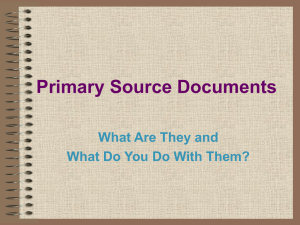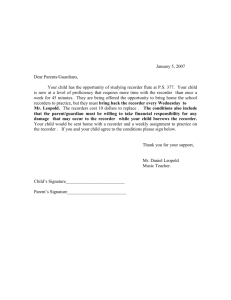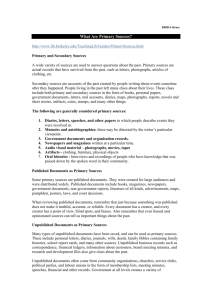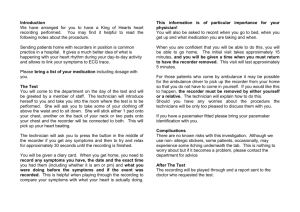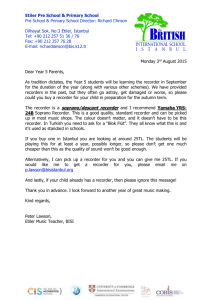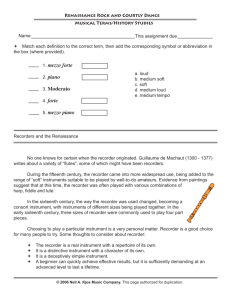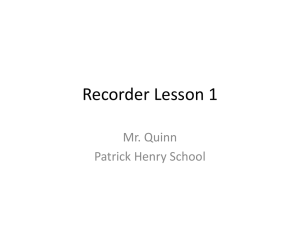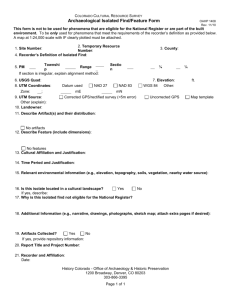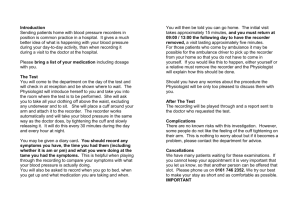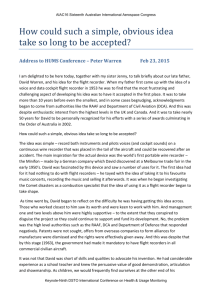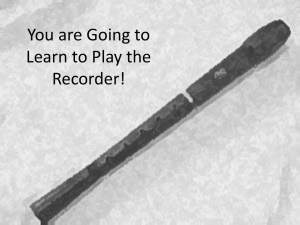Using Critical Thinking Skills to Analyze Primary Source Materials
advertisement
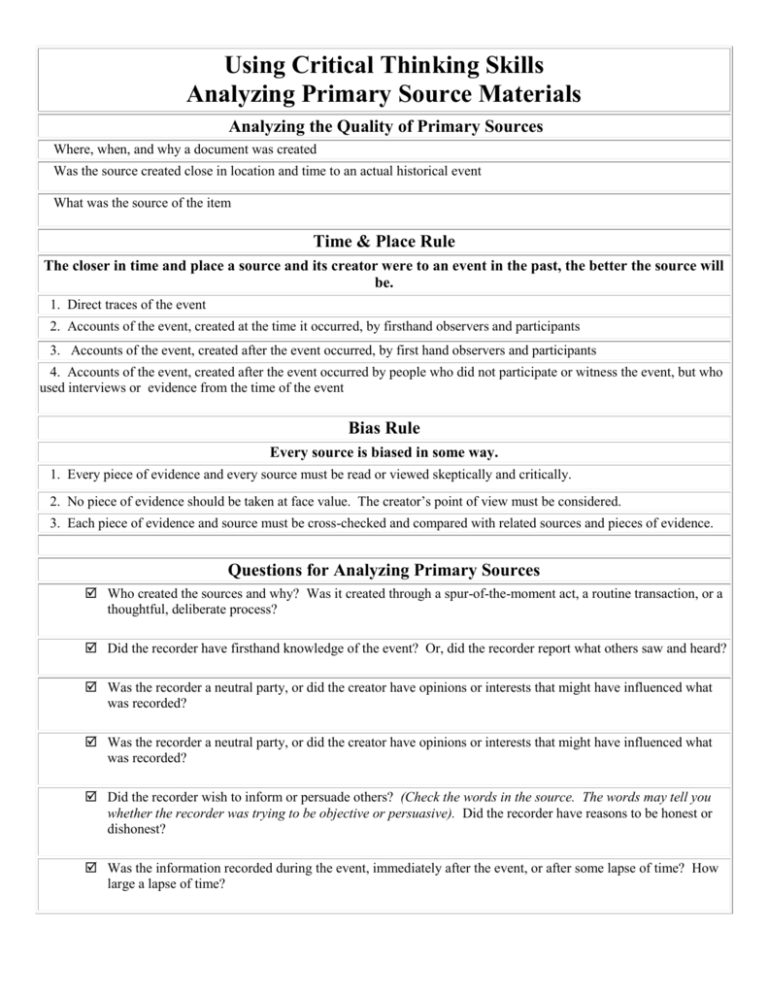
Using Critical Thinking Skills Analyzing Primary Source Materials Analyzing the Quality of Primary Sources Where, when, and why a document was created Was the source created close in location and time to an actual historical event What was the source of the item Time & Place Rule The closer in time and place a source and its creator were to an event in the past, the better the source will be. 1. Direct traces of the event 2. Accounts of the event, created at the time it occurred, by firsthand observers and participants 3. Accounts of the event, created after the event occurred, by first hand observers and participants 4. Accounts of the event, created after the event occurred by people who did not participate or witness the event, but who used interviews or evidence from the time of the event Bias Rule Every source is biased in some way. 1. Every piece of evidence and every source must be read or viewed skeptically and critically. 2. No piece of evidence should be taken at face value. The creator’s point of view must be considered. 3. Each piece of evidence and source must be cross-checked and compared with related sources and pieces of evidence. Questions for Analyzing Primary Sources Who created the sources and why? Was it created through a spur-of-the-moment act, a routine transaction, or a thoughtful, deliberate process? Did the recorder have firsthand knowledge of the event? Or, did the recorder report what others saw and heard? Was the recorder a neutral party, or did the creator have opinions or interests that might have influenced what was recorded? Was the recorder a neutral party, or did the creator have opinions or interests that might have influenced what was recorded? Did the recorder wish to inform or persuade others? (Check the words in the source. The words may tell you whether the recorder was trying to be objective or persuasive). Did the recorder have reasons to be honest or dishonest? Was the information recorded during the event, immediately after the event, or after some lapse of time? How large a lapse of time?
